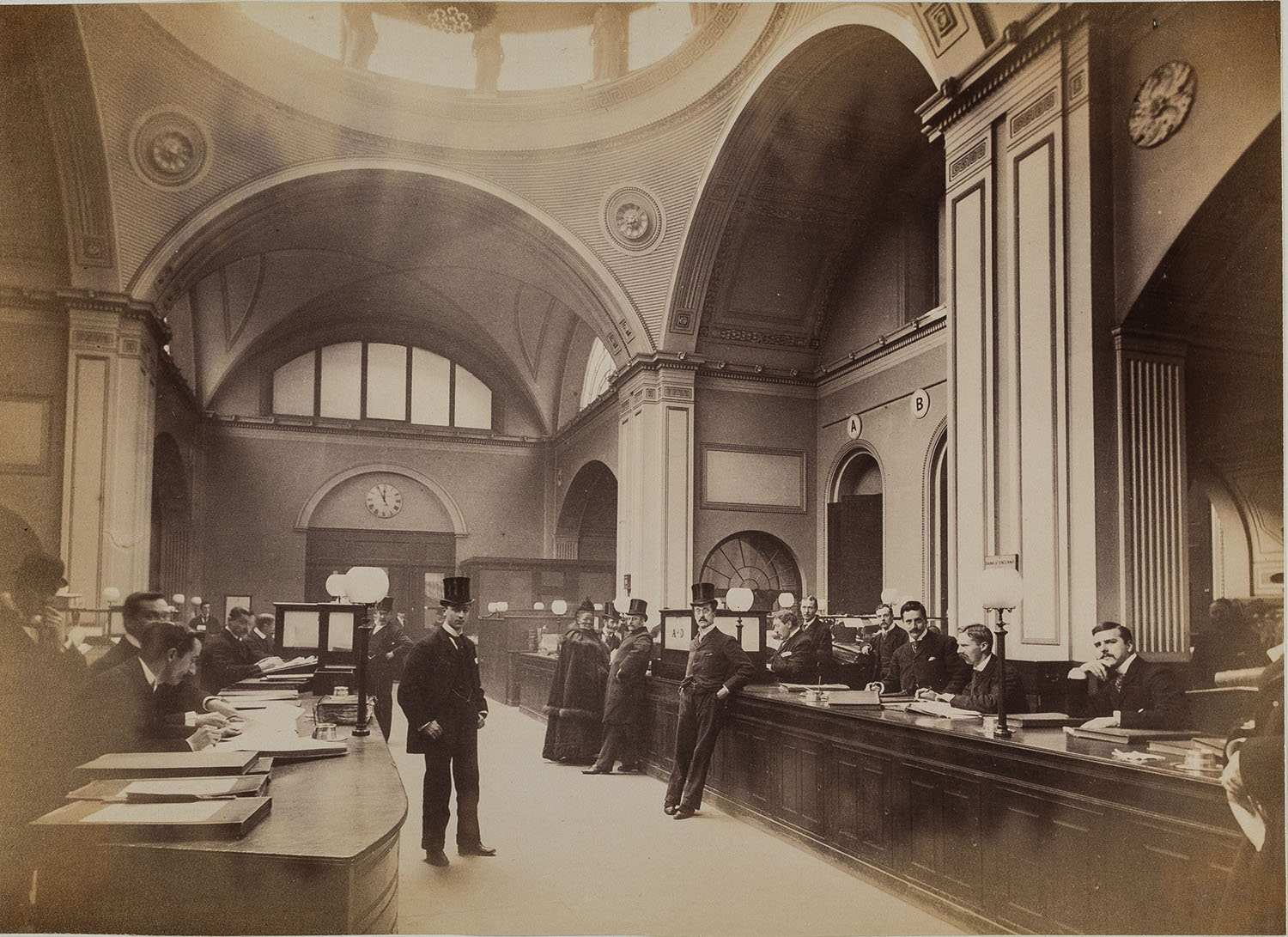Writers and banknotes
The new ten pound note features Jane Austen, one of the world’s best-loved authors.
Money was a huge theme in her work as it was central to domestic life.
In the late 18th and 19th centuries, women were financially dependent on their father or husband. However, many of the heroines in Austen’s novels refuse to marry for money or social necessity – like Jane herself, who never married.
But Austen isn’t the only writer to have appeared on a banknote. Shakespeare was on the £20 note between 1970 and 1992 and Charles Dickens featured on the £10 note between 1992 and 2003.
Dickens is one of the most famous storytellers of London. In The Pickwick Papers, he includes a scene set in our Consol’s Office.

The Bank of England Consols Office, 1894 (Archive 15A13/1/7, 1894)
Dickens would have visited that office himself as he held several accounts at the Bank of England, including a joint account with John Forster – a friend, agent and publisher of Dickens’ journal, Household Words.
A few of the articles Dickens wrote for the journal focused on our banknotes and people who forged them.
Among them, one is about Richard Vaughan, who is said to have faked banknotes to give to his wife-to-be as part of a marriage settlement.
Dickens claims that Vaughan tried to eat the evidence after being caught. One of these notes remains in our museum today (thankfully, not one of the chewed ones).
Thefts and frauds
Phileas Fogg’s epic journey in Around the World in Eighty Days follows a fictional theft at the Bank of England:
‘A package of banknotes, to the value of fifty-five thousand pounds, had been taken from the principal cashier’s table…’
Fogg and his friends debate how quickly and how far a robber could travel after such a robbery. Before long, things intensify and Fogg bets he can travel the world in eighty days – then sets off to prove it.
However, his departure convinces police detectives that it was Fogg who was the thief, which leads to a chase around the globe to capture him.
In other novels, people manage to creep into the gold vaults via the sewers, to steal gold. No thefts like this have ever been recorded, but legend has it that in the 1830s the Directors of the Bank received a letter, stating that its anonymous writer had access to the gold vaults.

Which other writers are associated with us?
John Keats, Thomas Gray, John Donne and Daniel Defoe were all born within a few minutes’ walk from us. Shakespeare also lived close by. Over the years, many authors’ work explores key themes associated with us.
An interesting example is Kenneth Grahame, who spent his whole career working here, after joining the staff in 1879. He published his popular novel, The Wind and the Willows, in 1908, shortly after he retired as secretary of the Bank of England.
One of Grahame’s short stories for children, The Reluctant Dragon, is a retelling of the tale of St George and the dragon. Although intended for a younger audience, the novel describes some of the tensions in his dual life as both a Bank official and a celebrated author.
